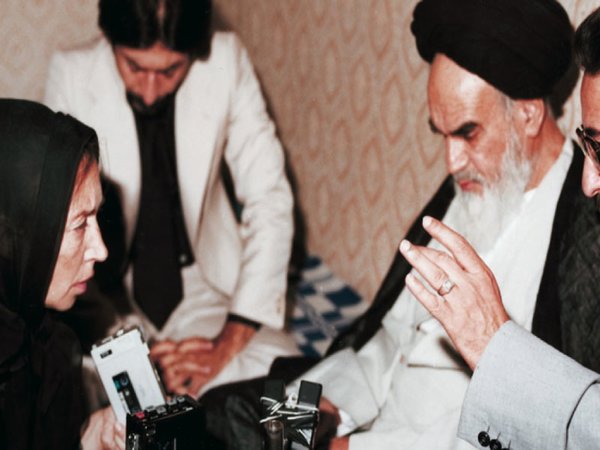In fulfilling the integral functions of reliably informing the public and holding powerful people to account, it is inevitable that journalists will affect reputations.
Journalists publish defamatory stories every day with no legal repercussions because their stories are legally defendable. For a story to be defendable though, it needs to meet the requirements of one of the defences to defamation.
What is defamation?
At its most basic, defamation is a tort that allows someone (the plaintiff) to sue another person who has harmed his or her reputation. A successful defamation action may also result in the defamed person receiving compensation for the wrong committed against them.
Defamation is the publication of material to a third person that damages the reputation of the plaintiff. Material can damage someone’s reputation if it exposes them to ridicule, causes others to shun or avoid them, injures their professional reputation or lowers their reputation in the eyes of ordinary community members.
In 2006, new defamation laws were introduced nationally to promote uniformity throughout Australia. In Victoria, the relevant legislation is the Defamation Act 2005 (Vic).
What are the defences to defamation?
Part 4 Division 2 of the Defamation Act (DA) lists the defences to defamation. There are eight defences listed in the DA, plus some common law defences that don’t appear in the statute. This explainer will deal only with the defences most relevant to journalists.
Truth
A journalist won’t be liable for publishing defamatory material if they can show that material was substantially true or was true in context.
Truth is not so much a ‘defence’ to defamation as a justification of it. As was said in the case of Rofe v Smith’s Newspapers Ltd (1924), ‘by telling the truth about a man, his reputation isn’t lowered beyond its proper level, but is merely brought down to it’.
This defence is useful to journalists who have made only a minor error; if they can prove their article is substantially true they will not be liable for defamation.
For this defence to succeed in court, the journalist must be able to prove the truth of the material through admissible evidence; that is, through evidence that complies with the rules of the Evidence Act 2008 (Vic).
The court will begin on the premise the truth defence does not apply and that the published material is false; the burden of proof then lies with the journalist to demonstrate that the material is true.
The journalist must prove the truth of the material on the balance of probabilities; that means the court must believe it is more probable that the material is true than untrue.
A journalist might also be required to prove the truth of any imputations that arise from the material they published. An imputation is the specific defamatory accusation that comes from a defamatory statement; what can be inferred from the written words.
For example, you publish a story saying used syringes were found in the garbage bin of a prominent footballer and you have photographic evidence. But can you prove the footballer takes illegal drugs? What if, in fact, the footballer uses the syringes to lawfully medicate his arthritic pet dog?
The logical inference drawn from your statement accuses the footballer of taking illicit drugs and so unless you can prove that claim, you cannot employ truth as a defence.
Contextual Truth
This defence may apply when the plaintiff complains about multiple defamatory imputations arising from the same published material. If the journalist can prove that the most serious imputation is substantially true, they may escape liability for the lesser imputations that are false, since those false imputations probably didn’t harm the plaintiff’s reputation any further.
For example, you write an article saying the CEO of a well-known company sexually harassed, assaulted and raped an employee in 2008. In fact, the CEO was found guilty of sexual assault and rape but not sexual harassment and sues you for defamation. You could defend your statement through a contextual truth argument; saying the CEO sexually harassed an employee doesn’t harm their reputation any further, considering your other statements about the sexual assault and rape convictions are true.
Privilege
The privilege defence applies where important material should be published despite its defamatory potential. There are several different forms of the privilege defence, including the common law and legislative versions as well as absolute privilege.
Political Qualified Privilege
Political qualified privilege is an extension of common law qualified privilege, which is of particular relevance to journalists. The defence is based on the implied constitutional guarantee of freedom to communicate on matters of government.
This defence only applies to defamatory material published in the context of discussion of political or government matters.
The 1997 High Court case of Lange v Australian Broadcasting Corporation explained to journalists and media organisations the three elements they must prove before they can rely on the defence of political qualified privilege:
1. When the defamatory material was published, there were reasonable grounds for believing it was true
2. Proper steps were taken to ensure the defamatory material was true and accurate, and
3. A response was sought from the person defamed and the response was published (or, if it were not published, there was a compelling reason for not doing so).
As well as the three elements above, the court must also find that the publishing of the defamatory material was ‘reasonable in the circumstances’. The court’s interpretation of the word ‘reasonable’ in this context could be problematic for journalists; if it is given a narrow meaning, the defence could be rendered useless.
This defence will be defeated if the plaintiff can prove the publication was motivated by malice. For example, if the material was published to get back at someone that would nullify the defence.
Journalists cannot use political qualified privilege as a ‘fallback defence’ if another defence fails. An example of this is if a journalist argues their material is substantially true, but the court disagrees, the journalist cannot then argue that their material should be protected by political qualified privilege.
Honest opinion
The honest opinion defence is most relevant to editorials, reviews and other opinion pieces.
To rely on the defence of honest opinion, journalists must prove:
1. The defamatory material was opinion, not fact
2. The opinion relates to a matter of public interest, and
3. The opinion was based on proper material.
Whether or not the defamatory material is fact or opinion is assessed in the light of how other people would read it. For example, you publish an article saying a member of the Guatemalan basketball team is not talented enough to be in the team.
This may well be your opinion; however, an ordinary reader might perceive that statement as fact. If you had instead said the Guatemalan basketball player had missed consecutive shots and failed their fitness test and then concluded that they should not be in the team, then this would be different. The ordinary reader should now see that this is your opinion, based on the facts you’ve set out.
The Defamation Act contains a definition of what is deemed to be ‘proper material’ upon which an opinion can be based in section 31(5). The definition explains that material upon which an opinion was based must either be substantially true or be otherwise legally defendable.
Fair report
The defence of fair report is based on the premise that certain public proceedings are so important to democracy that they should be reported on, regardless of whether anyone was defamed in the process.
Statements made within certain public proceedings may be reported on, regardless of their truth. Journalists must ensure any defamatory material is contained in a ‘fair report’ and that the proceedings in question were of ‘public concern’.
For a report to be ‘fair’, it must be both accurate and balanced and comply with ordinary journalistic standards.
In his book So you Want to be a Journalist?, Bruce Grundy says proceedings that are of public concern include parliaments, courts, public inquiries, shareholders meetings, public meetings held on a matter of public interest and election rallies.
The material must be published to inform or educate the public; if the journalist publishes the information with malice the defence will be defeated.
Public document
Journalists are free to publish material contained in public documents.
A document will usually be considered ‘public’ if it is published by parliament, governments or the courts.
To qualify for the public document defence, the defamatory material must be published to inform or educate the public and it must be contained in a fair report (see discussion on this point above).
Stephanie Rocca is a third year Bachelor of Law/ Bachelor of Media Studies student at La Trobe University. You can follow her on Twitter: @SLRocca91.
The full list of upstart’s explainers can be found here.







